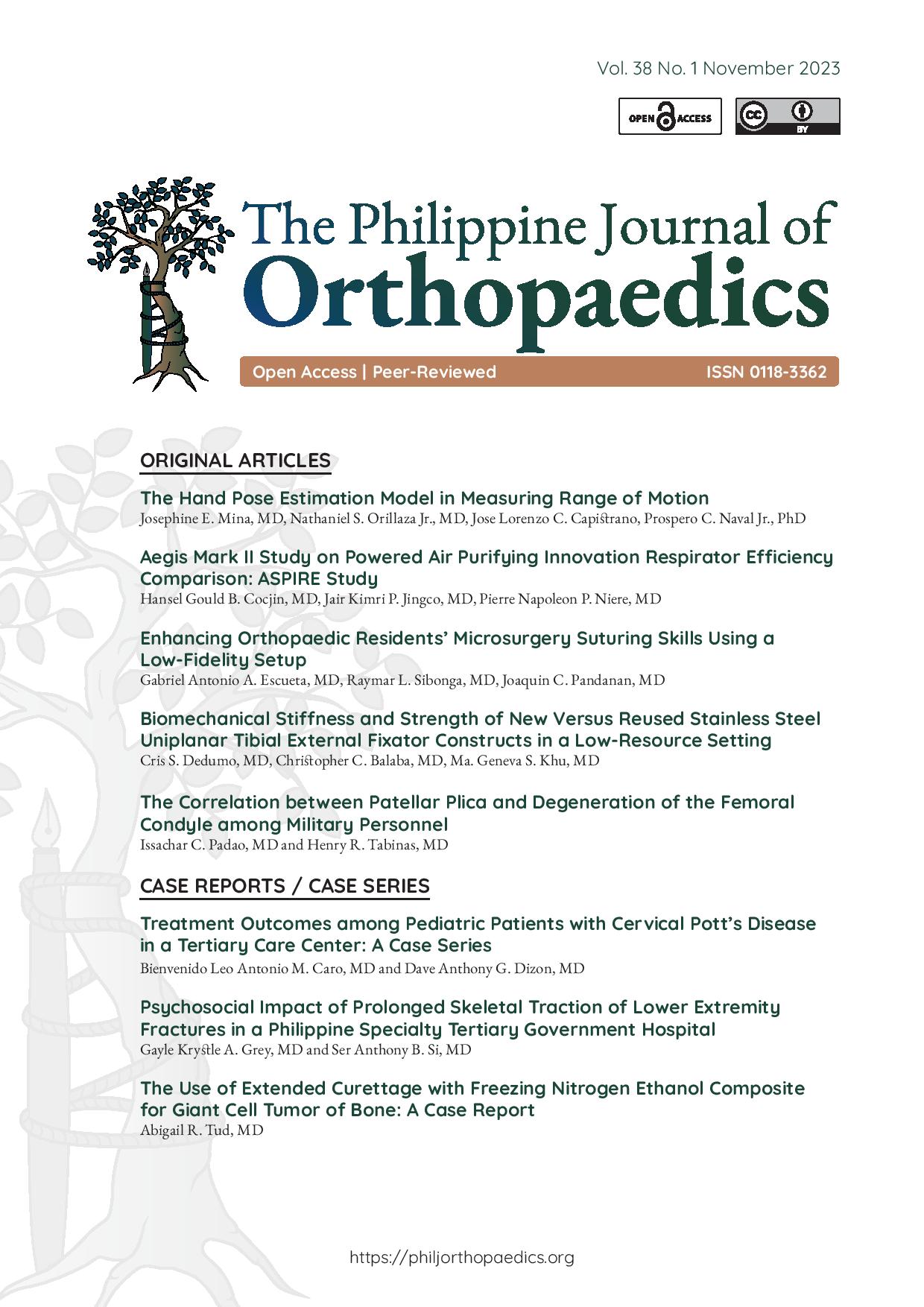A New Modular Nail Spanning System for Cement Spacer Reconstructions after Tumor Resection of the Knee
Main Article Content
Abstract
Limb Salvage procedure is now the management of choice for most musculoskeletal malignant tumors. Thanks to advances in imaging and adjuvant modalities, limb salvage has become an oncologically safe option.
The purpose of this paper is to demonstrate the use of a new modular titanium nail spanning system designed and developed locally in the Philippines which consists of two interchangeable end-to-end interlocked IM nails in varying sizes and a sliding nail connector that can be locked in place with two set screws. Results have shown good outcomes. Several implants have been used to augment these spacers such as Kuntscher nails, Steinmann pins, plates, and other fixed-angle devices. The challenge lies in increasing the longevity of these constructs as the durability beyond 26 months has not been well established. We present two patients who underwent a knee resection arthrodesis for distal femur osteosarcoma and reconstruction using the Tumor Nail System. The largest and longest possible diameter nails were inserted: one antegrade through the tibia and the other retrograde through the femur. Once the connector was locked, the defect was filled with antibiotic-impregnated cement. Post-operative recovery was unremarkable and patients were able to do pain-free full weight bearing on their affected lower extremity. This implant’s advantages include its modularity, ease of insertion, secure and robust nail connector, and circumventing contamination of the hip unlike traditionally inserted Kuntscher nails. This system is a viable option for primary knee resection-arthrodesis procedures following tumor resection. Long-term follow-up is needed to establish implant durability. Further studies can also show the potential of this implant for use as an initial spacer even in non-oncologic cases.
Article Details

This work is licensed under a Creative Commons Attribution 4.0 International License.

This work is licensed under a Creative Commons Attribution 4.0 International License.
References
Zwolak P, Kühnel SP, Fuchs B. Extraarticular knee resection for sarcomas with preservation of the extensor mechanism: surgical technique and review of cases. Clin Orthop Relat Res. 2011;469(1):251-6. https://pubmed.ncbi.nlm.nih.gov/20419485 https://www.ncbi.nlm.nih.gov/pmc/articles/PMC3008904 https://doi.org/10.1007/s11999-010-1359-8 DOI: https://doi.org/10.1007/s11999-010-1359-8
Puri A, Gulia A Pruthi M, Koushik S. Primary cement spacers: a cost-effective, durable limb salvage option for knee tumors. Knee. 2012;19(4):320-3. Phttps://pubmed.ncbi.nlm.nih.gov/21775149 https://doi.org/10.1016/j.knee.2011.06.012 DOI: https://doi.org/10.1016/j.knee.2011.06.012
Donati D, Giacomini S, Gozzi E, et al. Knee arthrodesis with a temporary spacer performed in malignant tumor around the knee. Arch Orthop Trauma Surg. 2002;122(2):123-8. https://pubmed.ncbi.nlm.nih.gov/11880918 https://doi.org/10.1007/s004020100327 DOI: https://doi.org/10.1007/s004020100327





